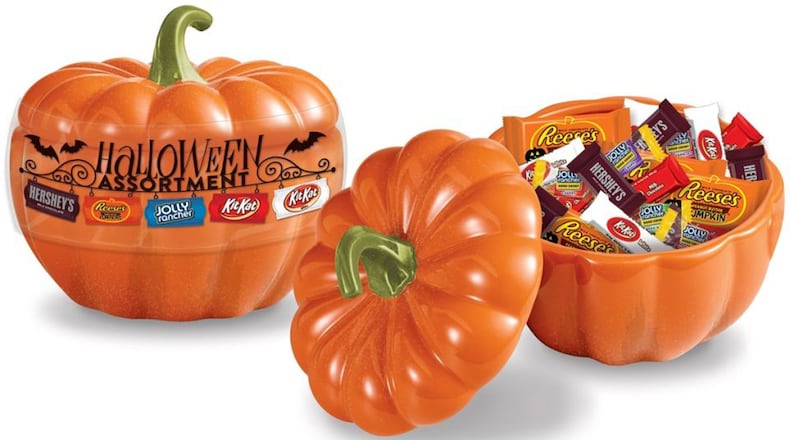Halloween is right around the corner, and underneath the fun of carving pumpkins and choosing costumes, many parents are worried about how much candy will come home with their kids on Oct. 31, and for good reason — there's a lot of sugar in those plastic pumpkins, totes and other bags of sweet loot.
"There are so many fun things to do for Halloween that have nothing to do with candy," said Dr. Stephanie Walsh, Strong4Life's medical director. "The holiday should be about getting dressed up and going door to door and family time."
Walsh, mother to three boys ages 16, 14 and 12, gives out a mix of candy and non-food items such as glow bracelets, light-up rings and stickers. Other non-candy ideas: bubbles, temporary tattoos, bouncy balls, mini Slinkys and Play-Doh.
Parents, she said, need to remember they are in charge. Just because children return home from an evening of trick-or-treating with huge bundles of candy doesn’t mean they have to eat all of it. Walsh suggests limiting children to five pieces of candy on Halloween night and to one or two pieces a night for the week that follows.
Parents can also schedule a visit from the "Switch Witch," who will swoop in on Halloween night and snag children's bags of candy, but leave fun surprises like Hula-Hoops, footballs, pogo sticks and board games. If planning a visit from the Switch Witch, Walsh suggests letting kids set aside enough candy to have a few pieces for a few days after Halloween.
RELATED: How to have a fun and safe Halloween for kids of all ages
The typical plastic pumpkin can contain as much as 365 teaspoons of sugar — the same amount of sugar in 12 double scoop vanilla ice cream cones (which can be nearly 60 times the recommended daily serving of sugar for kids), according to Walsh, so Switch Night can be a good way to limit how much sticks around the house. She also said parents should mention, or in some cases, introduce the Switch Witch concept to their kids before the holiday to avoid catching them off guard Halloween night.
Despite the dangers of eating too much candy, she's not sure a complete ban on candy is the way to go. "If you forbid candy altogether on Halloween, it may feel restrictive and what can happen sometimes is the child will end up sneaking candy," Walsh said. "That's why this can be an opportunity to teach your child moderation and balance."
Walsh also reminds parents that as with all things, it’s important to set a good example, “Model moderation and balance yourselves, and kids will follow your lead.”
Giving out candy is OK too, but be sure to select candies with nutritional value like chocolates (the darker the better). To get your kids involved, take them shopping with you. Let them pick which candy and non-candy your family should provide at the door.
Walsh urges parents to talk to their kids about any changes to this year’s routine before going trick-or-treating, so they know what to expect when they get home.
TRICKS FOR REINING IN TREATS
Jennifer Gibson, nutritionist and head of coaching for Vida Health, a San Francisco-based health coaching network, provided the following six "tricks" to curb cravings for those "treats" this October:
Repurpose the candy: Use the candy to decorate gingerbread houses or other holiday-themed art projects.
Give kids the power, then donate: Allow your kids to pick out a few favorite treats, then donate the rest to send to our military men and women overseas.
Participate in a buyback program: Check out a website such as www.halloweencandybuyback.com where kids can sell their candy to local businesses, mostly dentist offices, for $1 a pound.
Set up a visit from the Switch Witch: The Switch Witch can sneak in on Halloween night and trade the kids candy for toys or money. (Experts recommend parents talk to their children about this plan ahead of time, and let the children pick out some of their favorite candies before the visit from the Switch Witch.)
Out of sight, out of mind: Keep candy in a high, out-of-the-way place to help everyone forget about it.
Set limits and end dates: Set a limit on daily allowances and have an end date for candy. Example: Let kids have one piece each night after dinner for the week after Halloween. And remember, adults love candy, too. Once you reach the limit for the kids, don't keep the candy in the house or the adults may be tempted to dig in once the kids are in bed.
About the Author
The Latest
Featured


